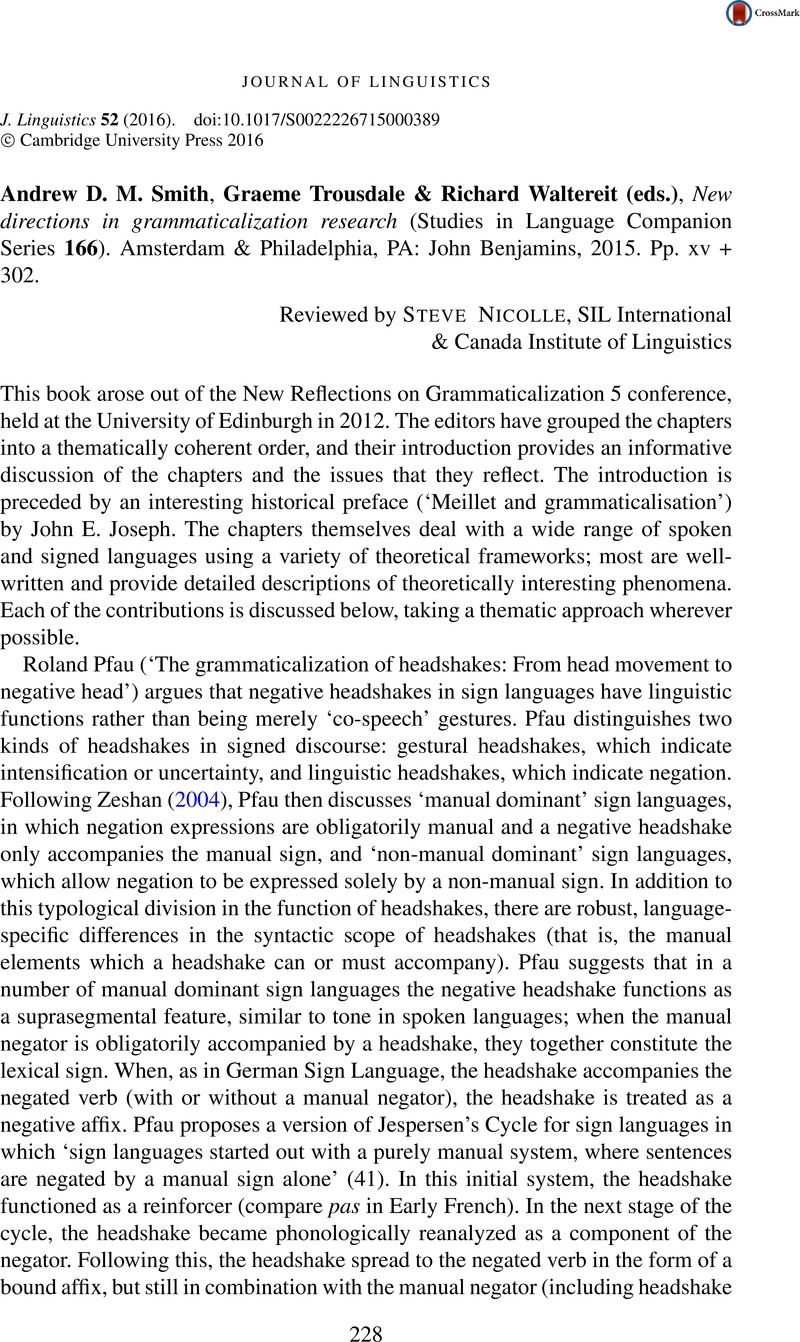No CrossRef data available.
Article contents
Andrew D. M. Smith, Graeme Trousdale &Richard Waltereit (eds.), New directions in grammaticalization research (Studies in Language Companion Series 166). Amsterdam & Philadelphia, PA: John Benjamins, 2015. Pp. xv + 302.
Published online by Cambridge University Press: 12 February 2016
Abstract
An abstract is not available for this content so a preview has been provided. Please use the Get access link above for information on how to access this content.

- Type
- Reviews
- Information
- Copyright
- Copyright © Cambridge University Press 2016
References
Aijmer, Karin. 1997. I think– an English modal particle. In Swan, Toril & Westvik, Olaf Jansen (eds.), Modality in Germanic languages: Historical and comparative perspectives, 1–47. Berlin: Mouton de Gruyter.Google Scholar
Andersen, Henning(ed.). 2001. Actualization: Linguistic change in progress. Amsterdam & Philadelphia, PA: John Benjamins.CrossRefGoogle Scholar
Thompson, Sandra A. & Mulac, Anthony. 1991. A quantitative perspective on the grammaticalization of epistemic parentheticals in English. In Traugott, Elizabeth Closs & Heine, Bernd (eds.), Approaches to grammaticalization, 313–339. Amsterdam & Philadelphia, PA: John Benjamins.CrossRefGoogle Scholar
Van Bogaert, Julie. 2011. I thinkand other complement-taking mental predicates: A case of and for constructional grammaticalization. Linguistics 49, 295–332.Google Scholar
Zeshan, Ulrike. 2004. Hand, head, and face: Negative constructions in sign languages. Linguistic Typology 8, 1–58.CrossRefGoogle Scholar




